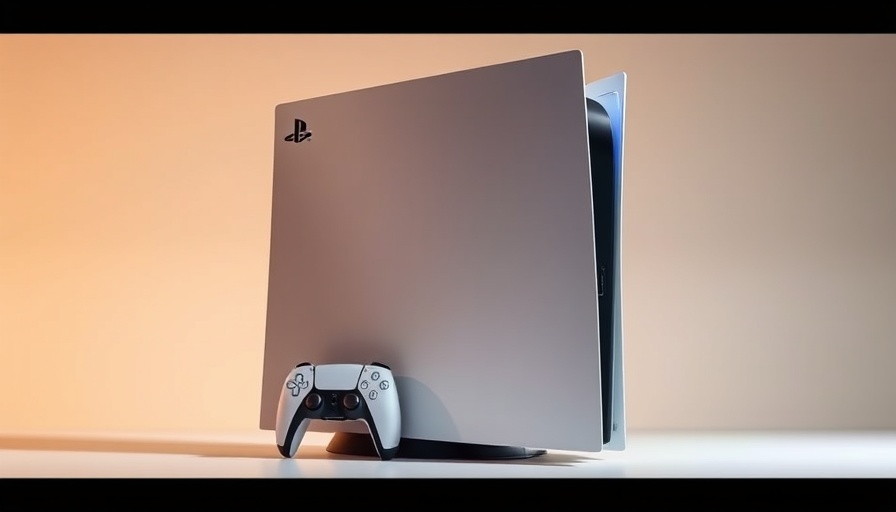
Sony's Price Increase: What's Behind the $50 Hike for PlayStation 5
In a significant move signaling challenges in the gaming industry, Sony has increased the price of its PlayStation 5 consoles in the U.S. by $50, effective from August 21, 2025. The new prices will see the flagship PS5 Pro model retailing at $749.99. This increase stems from tariff uncertainties and escalating costs, which Sony cites as crucial factors impacting their pricing strategy.
The Turbulent Landscape of Tariffs and Trade
Tariffs imposed by the U.S. government under the Trump administration, particularly on imports from Japan and China, have created a precarious environment for electronics manufacturers. These tariffs contribute to concerns regarding supply chain disruptions and increased material costs, which ultimately affect consumer prices. As Sony battles these challenges, it becomes clear that the gaming landscape is negotiating a complicated intersection of global trade policies and consumer expectations.
The Broader Implications for the Gaming Industry
This price hike is not an isolated occurrence. Earlier this year, Sony raised prices in various European markets, with Microsoft soon following suit by increasing the costs of its Xbox consoles. Analysts had predicted 2025 would be a robust year for gaming hardware, buoyed by highly anticipated titles like Grand Theft Auto VI and rumors of Nintendo's Switch 2. However, both Sony's price adjustment and the delayed release of GTA VI have shaken confidence in the market, casting shadows on growth forecasts.
Sales Projections and Consumer Reaction
Initial enthusiasm for the PlayStation 5, which launched in late 2020, saw strong demand fueled by pandemic purchasing habits. Yet, as shortages subsided, so too did demand. Industry experts express concern that higher price points could further dampen sales, especially as gamers await premium releases that were expected to boost console purchases. The confluence of these factors leads to questions about how price-sensitive consumers will respond to increased costs.
A Comparison of Pricing Strategies
To further understand the market dynamics, it’s beneficial to look at pricing strategies employed by other manufacturers. For instance, Microsoft's recent price adjustments mirror Sony's, indicating a trend across the industry that may force consumers to reassess their purchasing decisions. How these companies navigate these pricing challenges will define their competitive edge in a highly saturated market.
Future Predictions: Will the Gaming Market Bounce Back?
The future remains uncertain for gaming hardware sales. While major publishers like Take-Two Interactive and Nintendo are set to release blockbuster titles, the industry's recovery may rely heavily on how companies respond to shifting consumer sentiments toward pricing. Should Sony and Microsoft maintain these elevated price points, it could polarize consumer choices, potentially benefiting smaller competitors who offer lower-cost alternatives.
Encouraging Insights for Consumers
So, what can consumers take away from this situation? Being well-informed about market changes and understanding the nuances of pricing in the gaming industry empowers them to make more conscious purchasing decisions. Awareness of pricing trends and comparable product offerings will allow consumers to navigate this evolving landscape. Deals are still available, along with trade-in offers and bundles that may soften the blow of higher prices.
Conclusion: The Changing Nature of Gaming Economics
As Sony’s price increase echoes throughout the gaming industry, it’s clear that external economic factors play a significant role. While these adjustments may seem daunting, they highlight the complexities faced by manufacturers in navigating international trade and consumer behavior. Staying informed will not only benefit consumers but also inspire industry stakeholders to foster innovative solutions amidst challenging economic conditions.
 Add Element
Add Element  Add Row
Add Row 



Write A Comment